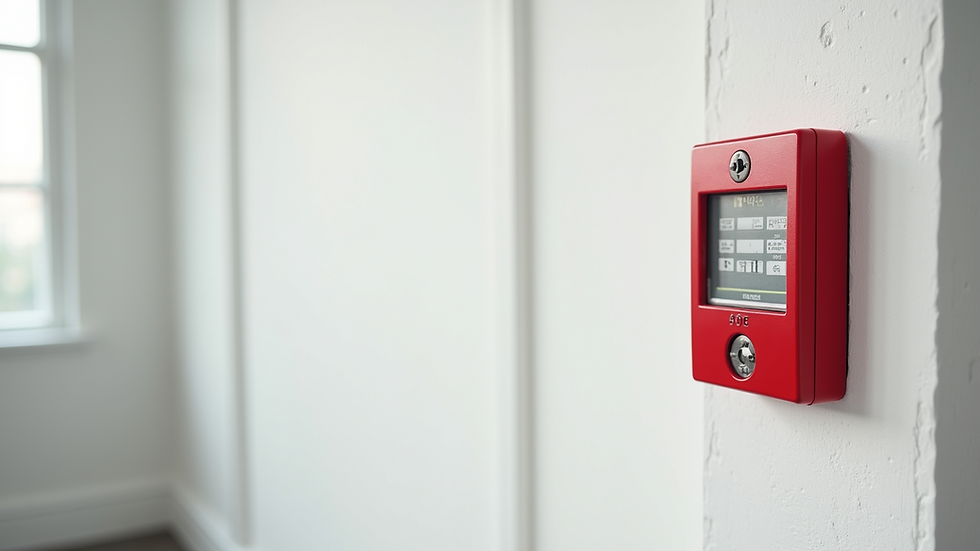Ensuring Property Safety with Fire Risk Assessments
- epcfirenw
- Jul 24
- 4 min read
Ensuring the safety of your property is a top priority for any homeowner or business owner. One of the key components to achieving this is through regular fire safety evaluations. These assessments help identify potential fire risks, allowing you to mitigate them before they become an issue. This blog post will dive into the importance of fire safety evaluations, how often they should be conducted, the components of a thorough assessment, and actionable strategies to enhance fire safety in your property.
Understanding Fire Safety Evaluations
Fire safety evaluations are systematic reviews designed to ensure that your property is safe from fire hazards. This involves assessing the premises for how flammable materials are stored, inspecting fire alarms, reviewing emergency exit routes, and checking that fire safety equipment is present and operational.
According to the UK Home Office, there were approximately 30,000 reported house fires in England in the year 2020. - The Fire and Rescue Services responded to over 150,000 incidents, with around 50% being false alarms. - An estimated 300 people lose their lives annually due to house fires in the UK.

Every property, whether residential or commercial, should be evaluated for fire safety. It's not just about compliance with legal standards. It's about fostering a safe environment for everyone involved.
The Importance of Regular Evaluations
Neglecting fire safety evaluations can lead to devastating consequences. In terms of property, this could mean significant financial losses, legal troubles, or worse - loss of life.
Example: A devastating fire in a residential block in London underscored the critical need for accessible fire exits. During the incident, a fire escape route was obstructed, preventing residents from safely evacuating the building as flames engulfed the structure.
Statistics from the UK Fire and Rescue Service suggest that effective fire safety measures can reduce property damage by up to 50%. This reduction is crucial when evaluating the financial implications of replacing or repairing assets.
If you want to ensure the safety of your property, making fire safety evaluations a recurring task is essential.

How Often Do You Need to Do a Fire Risk Assessment?
The frequency of fire risk assessments can vary based on several factors including the type of property, the level of risk, and regulatory requirements.
General Recommendations Include:
Every 12 Months: Most properties should conduct a fire risk assessment at least once a year.
Post-Modification: If you've made significant changes or additions to the property, conduct another assessment.
After an Incident: Following any fire-related incident, it is vital to re-evaluate the space for any potential hazards.
Local laws may have specific requirements, so be sure to consult your local regulations regarding the frequency of assessments.
Regular fire risk assessments ensure that you are not only compliant but also actively working to keep your property safe.
Key Components of a Fire Risk Assessment
A successful fire risk assessment includes multiple components. Being thorough ensures you cover all areas that may present danger. The key elements to consider include:
1. Identifying Fire Hazards
Begin by looking for potential fire hazards within your property. This could include:
Combustible materials stored incorrectly
Faulty electrical wiring
Overloaded electrical outlets
Conducting a comprehensive walkthrough of your property will help you spot these hazards early on.
2. Evaluating Existing Safety Measures
Next, review the current fire safety measures in place. This involves checking:
Smoke detectors and alarms
Fire extinguishers
Emergency exits
Make sure these devices are operational and easily accessible. According to the NFPA, properties with functional fire alarms are 50% more likely to have fire incidents reported with limited damage.
3. Developing an Emergency Plan
Once hazards are identified and safety measures evaluated, it’s crucial to develop an emergency response plan. This plan should outline:
Evacuation routes
Designated meeting points
Procedures for calling emergency services
Having a clear, accessible plan can make all the difference in an emergency situation.

Actionable Steps for Enhancing Fire Safety
Enhancing fire safety in your property doesn't need to be complicated. There are straightforward steps you can take:
Educate Occupants: Organize fire safety training for employees and family members. Knowledge about how to prevent fires and what to do in an emergency can save lives.
Regular Maintenance: Ensure your fire safety equipment is regularly inspected and maintained. A faulty fire extinguisher or inoperable smoke alarm can have devastating consequences.
Stay Informed: Keep updated with the latest fire codes and regulations. Compliance helps minimize risks and enhances safety.
Investing the time and resources into these actions will pay off in peace of mind.
Final Thoughts on Fire Safety Evaluations
Fire safety evaluations should be seen as an ongoing responsibility, not just a box to check during compliance inspections. They are essential tools in safeguarding lives and properties against fire risks.
Engaging in regular evaluations, understanding the components of these assessments, and actively working to enhance fire safety measures will help protect your property over time.
For more detailed guidance on conducting effective assessments, consider fire risk assessments. The importance they hold in maintaining property safety cannot be overstated, and it’s never too late to start your journey toward a safer environment.
In the eyes of fire safety, diligence is key. When you focus on these practices, you not only protect your structure but also foster a culture of safety, making your property a secure place for everyone.




Comments